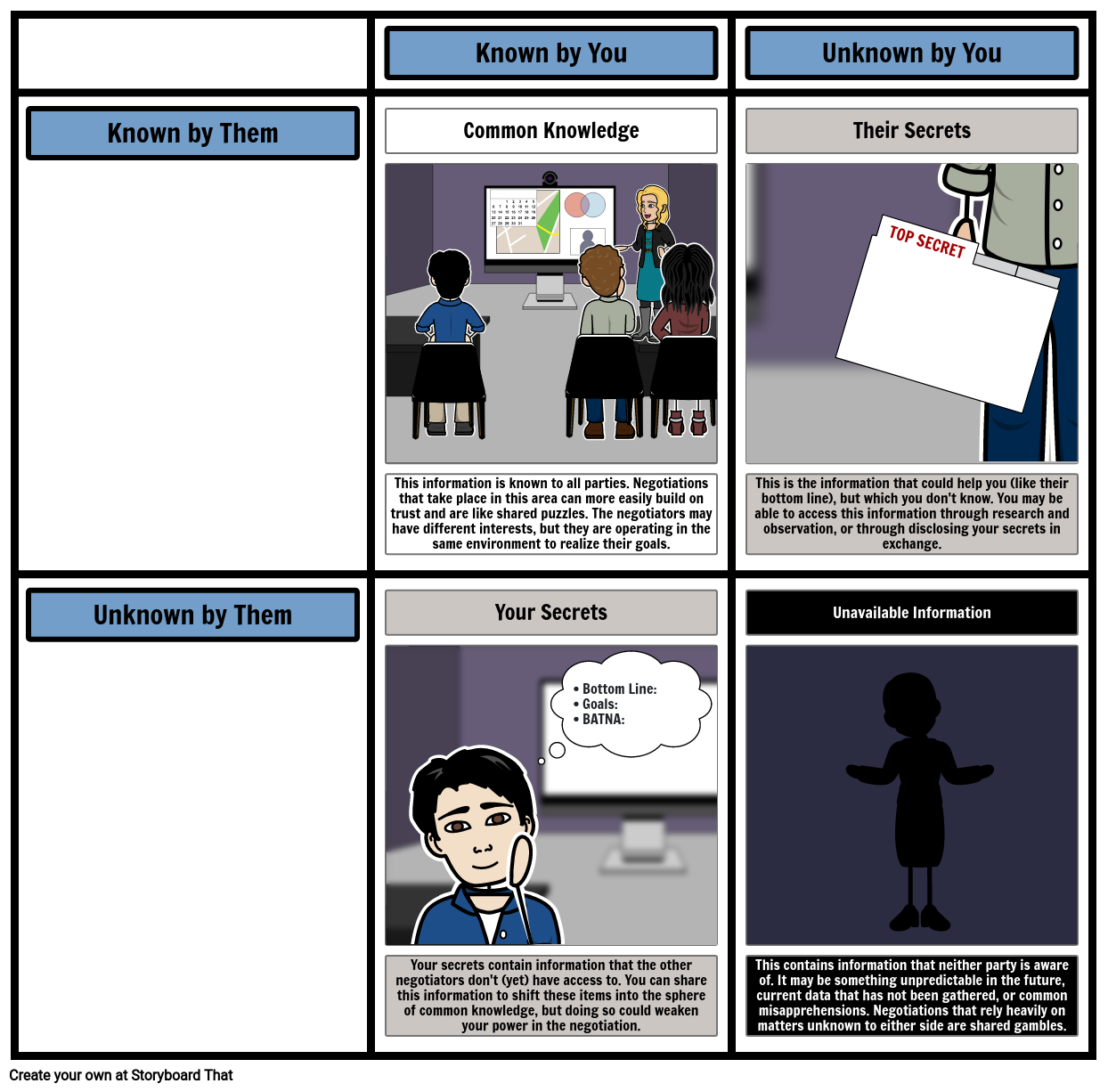The Johari Window is a tool that was developed by psychologists Joseph Luft and Harry Ingham in the 1950s as a way to better understand and improve interpersonal relationships. It is based on the idea that we all have different parts of ourselves that are known to us and known to others, as well as parts that are unknown to us and unknown to others.
The Johari Window is represented as a grid with four quadrants: open self, hidden self, blind self, and unknown self. The open self quadrant represents the parts of ourselves that are known to both ourselves and others. This includes our thoughts, feelings, and behaviors that we are aware of and willing to share with others. The hidden self quadrant represents the parts of ourselves that are known to us but not known to others. These are thoughts, feelings, and behaviors that we are aware of but choose not to share with others. The blind self quadrant represents the parts of ourselves that are unknown to us but known to others. These are things that others can see or know about us, but we are unaware of. Finally, the unknown self quadrant represents the parts of ourselves that are unknown to both ourselves and others. These are the aspects of ourselves that are completely hidden and unknown.
To use the Johari Window as a tool, individuals are asked to select a number of adjectives from a list provided to describe themselves. These adjectives are then shared with a group of people who know the individual well, such as friends or coworkers. These people are then asked to select adjectives from the same list to describe the individual. The results of this exercise can be plotted on the Johari Window grid to help the individual and their group understand where there may be discrepancies in self-awareness and how the individual is perceived by others.
For example, if an individual selects the adjective "confident" to describe themselves, but their group does not select this adjective to describe them, it could be an indication that the individual is not as confident as they believe themselves to be, or that they are not displaying their confidence in a way that is noticeable to others. In this case, the individual may want to work on improving their self-confidence or finding ways to better communicate their confidence to others.
On the other hand, if the group selects an adjective that the individual did not, such as "kind," this could be an indication that the individual is not aware of their own kindness or that they are not displaying it in a way that is noticeable to others. In this case, the individual may want to work on being more mindful of their actions and how they are perceived by others.
Overall, the Johari Window is a useful tool for improving self-awareness and interpersonal relationships. By better understanding the aspects of ourselves that are known to us and known to others, as well as those that are unknown, we can work on improving our self-awareness and the way we interact with others.







